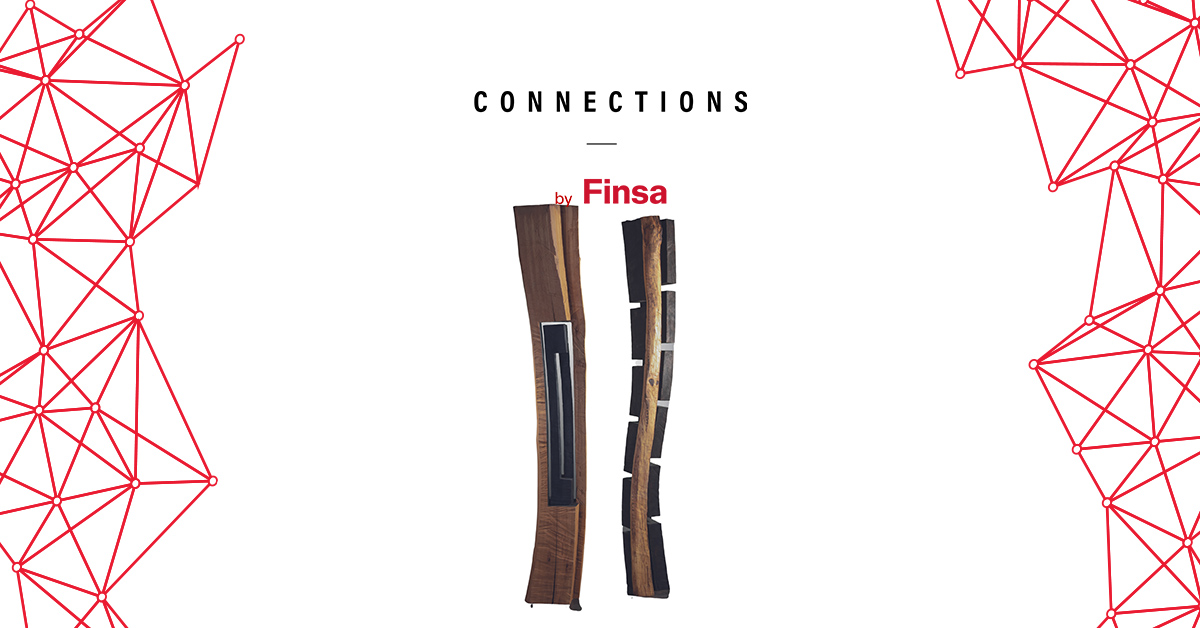Some changes are just unstoppable, and this is how architect and urban planner Daniel Ibáñez refers to the way that solid industrial wood (also known as mass timber, cross-laminated timber/CLT) is being used in construction with the idea of creating a built environment that aligns with nature. The transformation is slow, but it’s already underway.
In order to speed up the process, MASS Madera, a pioneering network in Spain, was created in 2022 with the goal of connecting key players and fostering coordination in order to increase the built surface area of structures made using this type of timber. This will facilitate the reduction of that 10% of global CO2 emissions directly related to the materials used in this sector. “There’s no lever we can pull to bring about change immediately, but change is inevitable. Europe is taking a chance [on this] and, at a global level, it will be on an even greater scale,” says Ibáñez, who specialises in the use of renewable materials in constructions and heads up the Instituto de Arquitectura Avanzada (IAAC/the Catalan Institute of Advanced Architecture).
Inclusive, environmentally friendly, and productive cities
The Barcelona-based centre of research, education, production, and awareness is leading the charge with new ways of building cities that will be inclusive, environmentally friendly, and productive. “Our goal is to accelerate the use of cross-laminated timber as one of the big solutions for the decarbonising construction,” says Ibáñez.
Ver esta publicación en Instagram
MASS Madera is financed by Built by Nature (BbN), a philanthropic fund backed by the Laudes Foundation, which in turn is part of the Brenninkmeijer family business, the multinational owner of C&A. It already has forty members in Spain, including developers, construction companies, architects, research institutes, lumber industries, cities, and associations that are committed to the fight against climate change. It also has support from the Spanish Government’s Ministry of Transport, Mobility, and the Urban Agenda, as well as the European Forest Institute, and the Higher Council of Architects in Spain. “We launched the project here because the percentage of construction using this approach is very low, but there is huge potential, with more industries signing up, growing awareness, and increasing number of initiatives,” says Ibánez.
Ver esta publicación en Instagram
Cross-laminated timber: the key to change
One of the first tasks on the list is to raise awareness of CLT. In October 2022, the group presented the installation titled Mass is More at the Mies van der Rohe Pavillion in Barcelona, an immersive and experiential designed by Ibáñez’s team together with fellow IAAC architect Vicente Guallart and Alan Organschi from Bauhaus Earth. It was designed to help the public learn about the innovation in the design and management of urban environments (biocities) and to explore the construction possibilities that this regenerative and decarbonising material offers, with all of the pieces in the installation being produced by Galician CLT company Xilonor.
MASS Madera will continue to create more ‘demonstrator projects’. “We believe that this is key. In the end, an installation like the one we did in Barcelona can be visited by people, help them understand that this technology is ready to be used, and to see its characteristics,” says the architect.
Ver esta publicación en Instagram
Why solid timber?
Over the last few years, the production of cross-laminated timber has been the main driver behind the transformation of the current building model. CLT is one of the main competitors for other, less environmentally friendly materials that rely on fossil fuels, such as steel, concrete, and brick. “Right now,” says Ibáñez, “we have the possibility of building buildings that have two functions: the one they’ve always had, which is the social function, of providing housing, meeting the housing demand, of buildings that a growing population requires, and then there’s a second, environmental function”.
Does this mean we are never going to use concrete again? “Of course not, it will still be around. The question is whether we need to build entire buildings out of concrete or move towards opportunities for timber construction that make more sense and are beneficial to the environment. Right now, the only alternative we have is building our housing stock using CLT,” says the architect and urban planner.
Advantages of using timber in cities
What are some of the advantages of using timber in the urban space?
- It has renewable origins.
- It promotes sustainable forest management.
- It stores CO2.
- It’s light and easy to transport.
- It’s highly industrializable.
- It encourages
- It’s both a good insulating and structural material.
- It can be used alongside rapid construction, with greater control over the project, fewer risks, and less pollution.
If the 19th century was all about steel, and the 20th century was all about concrete, the 21st century will be all about timber, which will help create a great circular economy model and advance decarbonisation. “Not only is it possible, it’s inevitable and necessary. The number of CO2 particles in the atmosphere continues to grow, and of the few good solutions available, this is the one [we need to go for], timber construction. Of course, we need to keep an eye on the entire value chain,” Ibáñez reminds us, “making sure the forest is well-managed, certified, [and] that it can generate plantations that trap carbon.”
Ver esta publicación en Instagram
Challenges in timber construction
The change requires incentives in order to breakthrough the barriers that inhibit progress, such as a lack of awareness among developers of the benefits of this material when it comes urban and residential development. Ibáñez says that, in order to combat this, they are planning to systemise data and present a big annual report about the state of timber construction using industrialised timber. “Right now, there is still a lot of uncertainty. People don’t know how many buildings are going up or how much they cost. I’m a little bit tired of hearing how timber can burn or that it’s more expensive. That’s just not it, we need to get that straight.”
They also plan to dispel the sector’s own insecurities once and for all. “I was afraid that there would be a certain distrust among competitors. Having two big industries in the network is not a problem; actually, the opposite is true. I believe that everyone has understood that this isn’t about competing with each other, but rather helping a very small market to grow.”
Ibáñez says that another roadblock is a lack of incentives and specific regulations that facilitate the use of this material, which is why MASS Madera is working on a draft for a future law regarding the decarbonisation of the sector. “We have to look at what other countries are doing, the other regulations that are being applied, because there are some very interesting things being done in Europe,” he explains. One example is the announcement from France that, from 2023 onwards, publicly funded buildings will be built from at least 50% timber or another biomaterial. Then there is Belgium “which we really like because it doesn’t make anything mandatory. Rather it incentivises this type of construction by offering more development potential on land if the structures being built use a material with a neutral carbon footprint, or at least one that is much smaller than the average. We are trying to make that happen in Spain”.
Nevertheless, Daniel Ibáñez says that the key to all this is the role of architects and architecture schools. He says that “it’s not that they don’t encourage this type of construction, they actually discourage it. Public university education in Spain is great, but it’s like an elephant – it’s impossible to get it to move quickly”.
Ver esta publicación en Instagram




